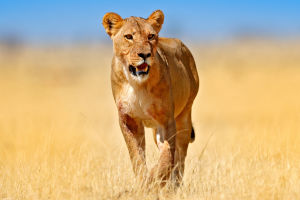Sheep, deeply intertwined with human history since antiquity, harbor captivating secrets that often escape our notice.
While these animals may seem familiar, there is much about them that remains unexplored by many.
Among the most celebrated figures in the scientific community stands "Dolly," the iconic cloned sheep born at the Roslin Institute in the United Kingdom in 1996. Dolly's birth marked a groundbreaking milestone in somatic cell cloning, captivating the world and showcasing the potential of this revolutionary technology. Although Dolly was euthanized in 2003, her legacy endures through her cloned offspring. Four sheep, genetically identical to Dolly, were successfully created using preserved cell tissue by Keith Campbell, one of the scientists instrumental in Dolly's creation. Born around 2007, these clones serve as living testaments to the advancements in cloning technology and the enduring impact of Dolly's legacy.
In recent years, scientists worldwide have made significant strides in unraveling the mysteries of sheep genetics. Collaborative efforts between esteemed institutions such as the Chinese Academy of Sciences and the Roslin Institute have yielded groundbreaking achievements, including the comprehensive mapping of the goat and sheep genomes. These landmark discoveries not only deepen our understanding of sheep genetics but also pave the way for targeted breeding programs aimed at enhancing desirable traits such as high-quality wool, skin, and meat. Sheep have emerged as invaluable contributors to medical research, offering valuable insights into human health. For instance, Japanese researchers achieved a notable breakthrough by successfully growing a functional heart aortic valve from goat skin cells. This remarkable feat holds promise for regenerative medicine and offers new avenues for treating heart valve defects in humans.
Beyond their scientific significance, sheep play a pivotal role in environmental studies. Observations of sheep populations on a Scottish island revealed a fascinating phenomenon: a decrease in average size over 24 years, attributed to climate change-induced alterations in grazing patterns and survival strategies. This compelling discovery underscores the intricate relationship between animal behavior and environmental dynamics, shedding light on the profound impact of climate change on wildlife populations. Sheep are key players in the global discourse on climate change. While human activities are widely recognized as major contributors to greenhouse gas emissions, the methane produced by livestock, including sheep, represents a significant and often overlooked source of emissions. This highlights the complex interplay between animal agriculture and environmental sustainability, underscoring the importance of holistic approaches to mitigating climate change.
The unique physiology of sheep, including their rectangular-shaped pupils, offers fascinating insights into their visual capabilities and behaviors. Unlike humans, whose pupils are round, sheep possess rectangular pupils that provide them with an exceptionally wide field of vision, enhancing their ability to navigate their surroundings and detect potential threats.
In essence, sheep, often overlooked in their significance, offer a wealth of knowledge and inspiration across various fields, from genetics and medicine to environmental science and physiology. By delving deeper into the intricacies of sheep biology and behavior, we gain valuable insights into the natural world and our interconnectedness with it, paving the way for future discoveries and advancements.


